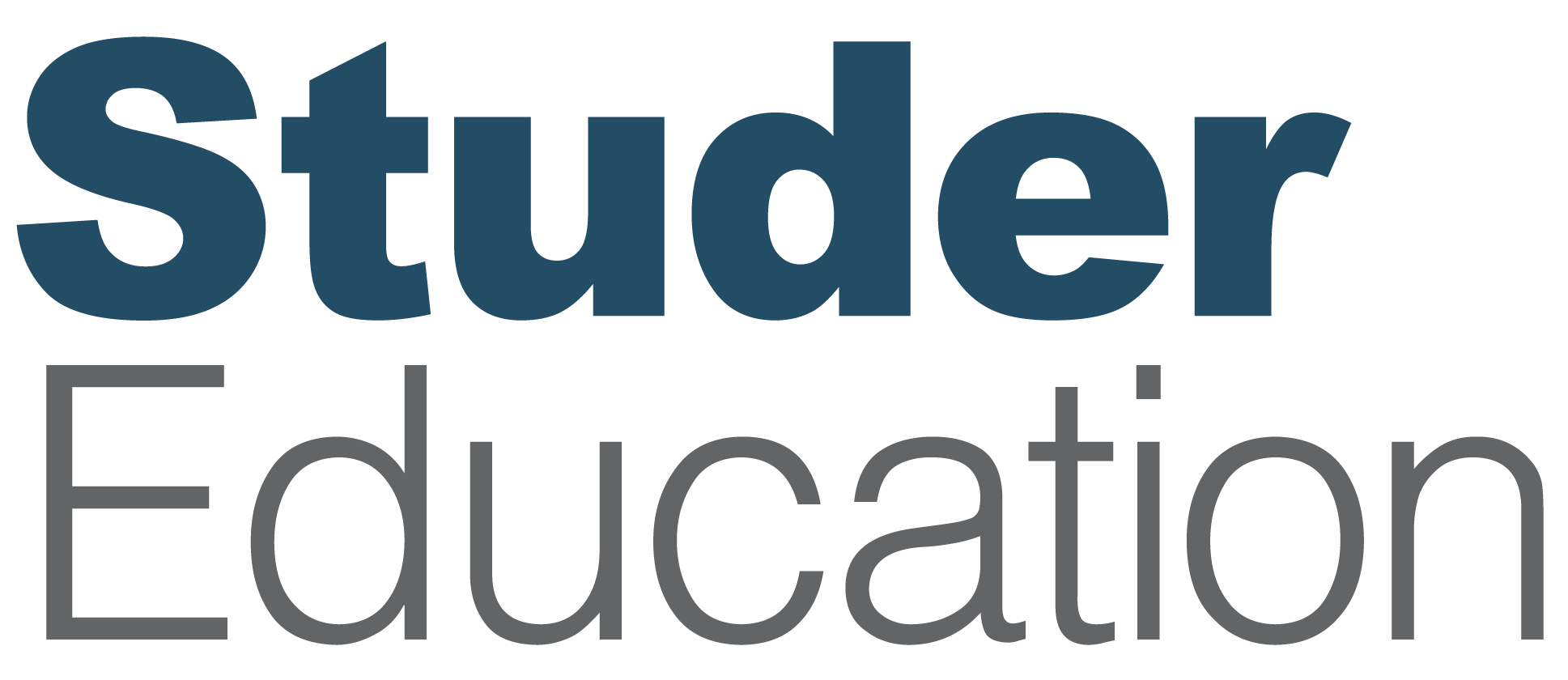
Continuing our series on Douglas School District‘s successful recognition strategies, Dr. Janet Pilcher welcomes School Nutrition Coordinator Jennifer Garner. Jennifer shares her heartfelt approach to staff appreciation, from personalized notes and engaging team activities to transparent communication. Learn how her dedication creates a culture where every team member feels deeply valued, driving remarkable results like 100% staff retention.
This episode addresses questions such as:
- How can leaders communicate effectively with their teams, especially when they are spread across different locations?
- Why is it important to tailor recognition to individual staff preferences?
- How does showing staff appreciation ultimately benefit students as well as district goals?
Latest Episodes
Jennifer Garner: I try to point out, be specific about what I’m thankful for and how it promotes our department and supports our district alignment and goals.
[Intro music plays in the background.]
Introduction
Janet Pilcher: Hello everyone, welcome to the Accelerate Your Performance podcast. I’m your host Dr. Janet Pilcher, founder and president of Studer Education.
Today we’re diving back into the heart of what makes a team thrive: gratitude and recognition. You’ve heard a lot about it on the podcast lately, and that’s because I think there’s no better time than the start of a school year to begin planning our intentional acts of recognition for the people we serve.
I’m thrilled to introduce Jennifer Garner, the Director of Food Service at Douglas School District in Box Elder, South Dakota. Jennifer is a leader who has built an exceptional culture within her department. She’s beginning her 11th year with the district. Prior to that, she directed a child care facility for 13 years, gaining valuable experience with meal patterns and program guidelines. Jennifer firmly believes in leading by example, being approachable and fostering transparency with her team. In fact, her dedication to team ownership led to the creation of their mission statement: fueling success one meal at a time.
You might recall hearing previously from Superintendent Kevin Case as well as Principal Jeannie Clark and teacher Laressa Finney, all from Douglas School District, who spoke on the importance of recognition and appreciation. You can find links to those powerful conversations in the show notes.
Join me today as Jennifer expands on the topic to share the specific creative strategies she uses to recognize her team. From personalized thank you notes and Patriot Proud cards to engaging team activities and her impactful monthly newsletter, you’ll learn how these efforts both boost morale and strengthen communication to build a transparent trusting environment which serves as the foundation for positive student outcomes in Douglas School District.
Let’s get started.
Interview
Janet Pilcher: It’s with great pleasure that I welcome Jennifer to our show today. Jennifer, welcome.
Jennifer Garner: Hello, thank you.
Janet Pilcher: So let’s go ahead and get started. I’m excited about our conversation today with the work that you do in the food service department and you leading that area.
So we’ve had an opportunity to talk to Superintendent Case and learn about some of the work in the district. So he spoke highly of the work that you all do about, with reward and recognition. So let’s talk a little bit about the specific strategies you’ve used in your department to achieve the positive outcomes that you’ve received.
Jennifer Garner: So, well, of course, we do our thank you notes, and that’s, I try to point out, be specific about what I’m thankful for and how it promotes our department and supports our district alignment and goals. And I try to send those out to my staff, especially if I see something that, you know, really stands out. I also do the Patriot Proud cards, which are just long postcards. That’s a quick shout out type of thing. Like our health inspections, we’re all 100% at all of our schools. So when I sent them the copy of their health inspection, I just put a good pat on the back and, you know, appreciating that they take such good care of their kitchens and well done on their health inspections.
I’m hoping to be better about the above and beyond rewards, and those are a little bit more specific. And those are presented by the executive leadership team. Mr. Case goes and shakes their hand and takes a picture and then that’s usually posted on our social media. So it’s a little bit more of a standout. I have done a few of those over the past year. Sometimes I just get a little too busy and then I have it on my calendar and then my calendar keeps going. So I hope to be better. My goal is to strive to be better about that this year.
I also do some fun things just to enlighten my staff and remember that there is fun and joy in their jobs. We can have fun and still do our jobs. So sometimes I’ll just send a little something for holiday, or this last November we did, you know, how many candies in the jar and the winner gets a turkey for Thanksgiving. At Christmas time we did a punch tree where we just had cups in the shape of a tree and they punched and some might be a little bag of coal or it could have been some fuzzy socks or some hot cocoa or something fun. And the winner was, won a ham for that. But we try to do some fun things like that. Also for lunch hero day I always do something for my staff whether it’s a coffee or sometimes I get a t-shirt and we all have the same t-shirt.
The beginning of this last year we created our mission statement as a whole entire team, and so our mission statement is a “fueling success one meal at a time.” And so when I do t-shirts or have something made, I have our mission statement put on that also.
Janet Pilcher: I love it, Jennifer. You know, I love, too, that the recognition is integrated with fun and people are enjoying it. I just wonder, you know, is there anything in particular as you think about some of the recognitions that you’ve done? Is there anything that you can share that you feel comfortable sharing of somebody that you did that you recognized and why did you recognize them?
Jennifer Garner: So, I have a, a staff member who’s at our Badger Clark kitchen. She has had excellent attendance every year that she has been here. She basically only takes one hour off a year where she goes and she does her wellness for her husband’s workplace. And it’s a mandatory thing for their insurance. But she is here every day. She has good communication skills, and it just, strives to show how important it is for those. And that’s our PK through grade three school.
And those kids just depend on seeing their face every day. So when I’m over observing, I love that, you know, the kids know her by name and they communicate well with her. My whole team there is really good with their attendance and stuff. So the kids, you know, I’m a stranger in their kitchen, and they’re like, “are you new?” or [laughs] you know, and so I just talk to them, and it’s just, it’s great to see that they know most of the students by name unless they’re, you know, brand new and just the rapport that they have with them. So I’m so proud that they have that and that they communicate with them so well.
Janet Pilcher: Yeah, I love, you know, in the example I had, I could almost guess, Jennifer, that the example that you would share would be, it’s not just a job where people come to work and they do their job within their particular job responsibility, but it’s that connection with the students that they’re they’re showing up every day doing the meaningful work because of the students that they connect with and the relationships that they build, and that’s what really makes it so special.
Jennifer Garner: It certainly is. I mean, my office is based in the middle school, my middle school staff, you know, if somebody is gone, I hear the students say, “where is so and so?” And then you will say, “oh, she’s out sick today,” or, you know, so, and they’ll be like, “oh well, I hope she’s back tomorrow.” And I don’t think always that we as staff members see that impact that we make on the students’ lives, and so, it’s when they come back the next day, I’m saying, “oh, so and so asked about you,” you know, and it’s, it makes them feel good. They’re making that impact on the students even though they may not even be realizing it, so.
Janet Pilcher: Yeah, absolutely. It’s just the way they show up and come to work every day, but they continue to do that. The recognition sure helps just to, you know, help them have meaning in their work.
Something else that Superintendent Case specifically highlighted your monthly newsletter for your team and how it includes stories. Can you tell me more about the role your newsletter plays in communicating and recognizing your team?
Jennifer Garner: So the newsletter originated that, I don’t have a whole lot of time with my team throughout the year, I have a little time at the beginning of the year and a little time at the end of the year because we have five different kitchens. And so I was talking with Ellie Martinez who also works with our district and I told her I just don’t feel like we have that communication. There’s a roadblock there where I cannot get them together as much as I would like to, my staff. So she asked how we communication, and I said typically it’s through email, which, you know, we get, I get lots of email in a day kind of gets lost in the shuffle.
So she thought, “well have you tried, thought about a newsletter?” and I thought, “what am I going to put in a newsletter?” But I sat down and gave it some thought, and I did start a newsletter. And I like to incorporate, you know, things that are going good in our department, things that need highlighted.
I have a section that is just what’s happening in the office because I think a lot of times they don’t realize what’s going on in the office and how much paperwork is involved to be on the program that we’re on, and so I, it builds that trust and connection because it’s more transparent about what is going on in the office. And they just think that I fill out an application and we automatically qualify for this. It is ongoing paperwork and throughout the entire year and they really do.
I mean, I put birthdays in there. I put highlights if we have something going on at one of the kitchens. At Christmas we did a spirit week where we, you know, dressed up funny. One day we played Christmas carols another day, and we just had different things that went on that just built rapport with the staff and built that staff morale.
But I also include what we’re learning at the administrative level. So in my February newsletter, I included about gratitude and why it matters. In my March one, one of my favorite things from Studer is, “are you an owner or a renter of your position?” And so I have brought that up a couple of times is that, you know, if you are an owner, you take pride in ownership in your position. You work better as a team where, if you’re just a renter, you’re here to get a paycheck. You aren’t looking at it from the same attitude as you would if you are an owner of your position. So that is one of my favorite areas of that.
But I also included the thank you notes. So while we as admin have been doing the thank you notes for over, just over a year now, I included my staff in that. In March, I also sent them all thank you notes. And I explained to them it doesn’t just have to be our department. We are a system as a whole. And so if you have a custodian who comes in and helps you with something or you even have a student who is particularly helpful or, you know, kind or helps another student, I said, “you can point out things that look right in anything.” And so they were given a stack of Patriot cards and of thank you notes. And some of them have used them but and then some of them have asked for a few more, so it’s been really nice seeing that.
But also I put some little joke sometimes in the newsletter. I try to make it fun and more eye-catching than just an email. So each month I send out that newsletter. I print one and send it to them in their kitchens. But I also send them each the copy of it so they can read it when they have the time to read it so.
Janet Pilcher: So good. And I love the variety of information you include, Jennifer. And it’s interesting, like, people are, I’m sure, each month they know what’s going to be on it. They know what the structure is, and they’re waiting to see what–and I love the little tidbits; it’s almost like a tip, you know, like a learning step, right?
And I love two things that you said. The learning tip and the recognition that’s embedded within the learning tip, and the other thing that I heard you say which I think is really spectacular is whatever is going on and that you hear from leadership and the administration, you can put that in there as a way to cascade certain types of communication that would be meaningful to people.
Jennifer Garner: Right. It would be hard for us to get all of our arrows going in the same direction if all of our staff doesn’t understand what’s going on. So you know, including that I go to a training, went to farm to school training recently, and included some information about that–what would be pros of it, what would be cons of it. You know, the hard part in South Dakota is our growing season is over the summer, but our school year is the end of August through May. So it’s a very limited period of time which that growing season could, you know, be served in our schools.
But just like anything, you have to take the training and ask the questions and learn in order to weigh those pros and cons, but I did share that with my staff. So anytime I go to a training, I try to pass along the information that I’ve learned at the training and then I always open it up for questions. If you have any questions or you want to swing by, you’re welcome to do that, too.
Janet Pilcher: Excellent, Jennifer. Excellent. So let’s talk a little bit about rounding. Your district’s emphasis on rounding has also helped you connect and build relationships with employees across different buildings. So can you share an example or some things related to how you work with the rounding process?
Jennifer Garner: Sure. So when we started rounding, I have 21 people in my department. So I made a list to make sure that I, my 21 staff in addition to, you know, other people that I deal with on a regular basis. And so, of course at first they were a little unsure. They didn’t know what to expect and, you know, once they understood hey I’m just checking in, you know, is there any roadblocks? What’s going great? Is there anybody who has been particularly helpful to you? So it did pinpoint a few areas you know that we need to work harder on that, so production records which are always confusing for everyone. You know, last year we kind of changed our process and we made a spec sheet so everybody has the same information instead of just some people are putting the product number, some people are putting, you know, something else. So now we’ve narrowed that down, and so we’ve made that an easier process for the staff. It’s just that way everybody’s consistent. The only difference is the numbers that they serve.
Another roadblock that we had was one of our staff, she gets allergies to our dishwashing detergent, and so she asked if we could get longer gloves. So we got some longer gloves. And she’s like, “they’re not quite long enough.” So we actually had some arm covers here at our middle school office. And I’m like, “we’ll try these, and if they work, let me know, and we’ll just make sure that we have more on hand.”
So a lot of it is, a lot of the roadblocks we were able to solve. But if there, I haven’t come across any roadblocks that we aren’t able to solve. But it gives us the opportunity to collaborate and come up with a solution together versus how would I fix the roadblock myself because how I think isn’t always how my coworkers think so.
I think that it’s been enlightening to see who they find helpful. It’s just a good conversation, and now that they know more what rounding is, they’re more comfortable to talk you know and be like, “hey, we’ll have rounding, you know, can you swing by on your way to work today? We’ll just do quick rounding before you go to work.” You know, at first everybody’s like, “oh, you’re being called to the office,” or “Jen’s visiting and Jen’s visiting and she wants to talk to you,” and I’m like, “it’s just rounding, guys. I’m just rounding. I’m here to round, just check in with you guys, see how things are going.” And you know, so once they realize that, it’s gotten a lot more easy going, so they’re more likely to tell me, “oh, but I’m having this roadblock.” Well, most of them we can fix. I don’t know about them unless, you know, verbalize them to me or email me or something so.
Janet Pilcher: Yeah, I love it. And that’s what we find, Jen, we find that the barriers that people bring to you, I mean, every now and then they’ll bring something really significant that you have to take and, you know, solve for, but for the most part, they’re just kind of simple things that you never know. And they’re not going to tell you. That’s the thing, they’re not going to tell you. It’s the proactive way of really asking.
I also love that now it’s a habit of practice for what you d,o so they’re comfortable with it. They probably are saving their, you know, they’re writing their little notes to wait for your round to come. And so they have that opportunity. It’s just such a powerful, powerful tool.
The multiple things that you’ve talked about today just really begin to build great culture, and you just, the excellent leadership that you’re providing to guide that is meaningful to your people.
So as we close today, you know, think about, you know, what would you offer or advice to leaders, you know, that are looking to do this work of hardwired gratitude and recognition with their teams.
Jennifer Garner: I would have to say lead by example. So I really do believe that if you’re leading by example, then you know you will have staff who’s a little more resistant, but for the most part, I mean, of my 21 staff, most of them have caught on, you know, they ask questions. They’re more comfortable coming to me, and it shows in my retention, too, of my staff. This year I have 100% of my staff returning. So I have no hiring to do, which is, I mean, I’ve been here 11 years, and this is the first time that’s ever happened.
Janet Pilcher: And you have no onboarding to do, you know what I mean?
Jennifer Garner: No onboarding to do. Another thing I would have to say is being aware of your staff. There are people who don’t like recognition. It makes them feel uncomfortable, and so how you go about recognizing them also plays an impact. Because as you get to know your staff, I know I have a few just simply having a quiet conversation and thinking them and telling them what you’re thankful for and how you appreciate how they set an example is more impactful than sending them that card or doing that above and beyond because they do not want to be highlighted. They appreciate the recognition, but they’re just, you know, and then you have some that they love that above and beyond where they like having their face on Facebook and stuff.
So it really boils down to knowing your staff and their comfort level, too. So, I think, when you round with your staff or other people in the building, you get that feeling. You kind of know, well, they’re a little more quiet about it, so that they would rather just have you recognize them by saying thank you.
Janet Pilcher: Yeah, what it reminds me of a little bit, Jen is that, regardless of how we recognize them or how they want to be recognized, they do want to know they matter, right?
Jennifer Garner: Exactly. Yeah.
Janet Pilcher: So, and the way we show them that. And all of the things that you’ve talked about today really show that they matter and that they matter because they’re making such an impact on students’ lives which is where you started, and they get, I’m sure, a lot of satisfaction from knowing that that at the end of the day that they have had that effect and continue to build the relationships with students. Thank you so much.
Jennifer Garner: You’re welcome.
Janet Pilcher: You are, you are really, I mean, this is, it’s excellent. I mean, I know sometimes you probably think that some of the things that you’re doing are just part of what a leader needs to do or should do, so to speak, but not all leaders do what you do. So, thank you so much for what you are doing for your team and for your students and families. Thank you.
Conclusion
[Outro music plays in the background.]
Janet Pilcher: Thank you, Jennifer, for sharing your recognition strategies with us today. Once again, your district reminds us that showing appreciation isn’t just a nice-to-have. It’s essential for creating connection, trust and meeting exceptional outcomes. And your 100% staff retention clearly demonstrates the power of leading by example.
As we wrap up today, let’s take a page from Jennifer’s book. Let’s consider how we can integrate more intentional gratitude into our daily interactions, whether it’s a specific thank you or a fun team activity. Remember that consistent recognition tailored to individuals makes a difference. It’s how we ensure everyone knows they matter.
As always, I thank you for tuning into this episode of Accelerate Your Performance. I look forward to seeing you next time as we continue to work together to achieve organizational excellence. Have a great week, everyone.
Featured Guest

Jennifer Garner
School Nutrition Coordinator • Douglas School District, SD
-
Janet Pilcher President








